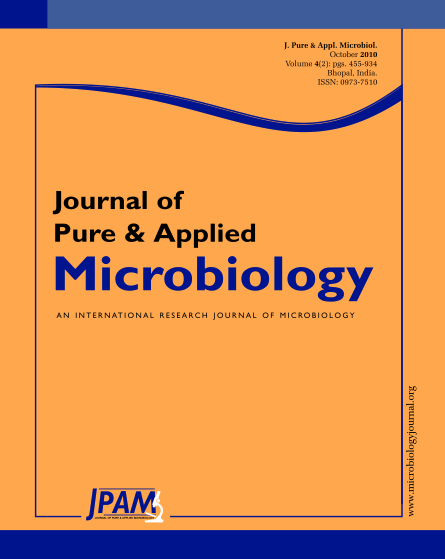Biological oxidation of organic dyes is important for textile industry wastewater treatment. Decolorization of four textile sulfonated azo dyes (Direct Blue 71, Direct Yellow12, Acid Black 210, and Reactive Black 5) by six bacteria IE1 (Citrobacter freundii) , IE2(Xenoranadus luminescence) and IE3 (Enterobacter cloace ) IE4 and IS1(Pseudomaonas species) ISEW (Enterobacter agglomerans Aerogenic strain Biotype-G2) isolated from two textile industry effluents, soil and sewage was studied. These isolates showed significant dye decolorization with a percent decolorization in range of 66.1% to 93.9% (Direct Blue 71), 26.73% to 92.46% (Direct Yellow12), 39.6% to 91.6% (Reactive Black 5), and 27% to 87.7% (Acid Black 210) under strict aerobic condition, at room temperature (RT) and neutral pH within 24h.
Textile industry, Azo dyes, Bacteria, Soil & Sewage
© The Author(s) 2010. Open Access. This article is distributed under the terms of the Creative Commons Attribution 4.0 International License which permits unrestricted use, sharing, distribution, and reproduction in any medium, provided you give appropriate credit to the original author(s) and the source, provide a link to the Creative Commons license, and indicate if changes were made.


